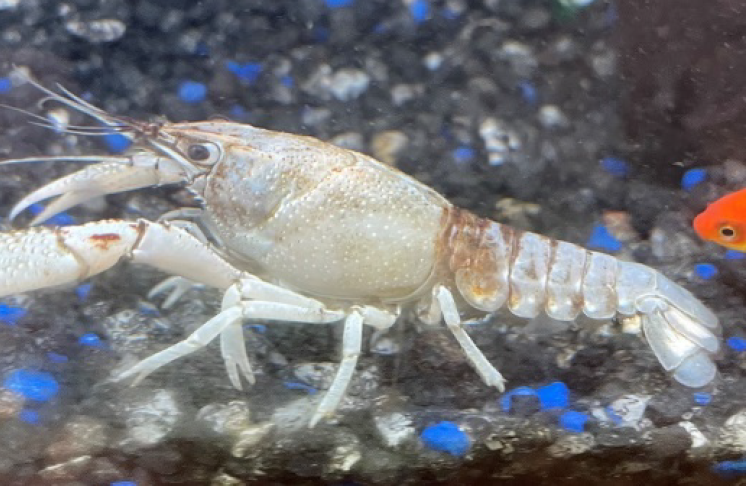Help prevent invasive species introductions
Join us on April 12th
The Minnesota Department of Natural Resources (DNR) Invasive Species Program is hosting a virtual presentation on recent efforts to prevent invasive species introductions through the live organism trades. Bring your lunch and click here to join the meeting at noon on April 12th, 2022.

The DNR recently completed several projects to assess risks of invasive species introduction through the live organism trades. Businesses and activities involving live organisms, such as the pet, horticulture, seafood, bait, and classroom and laboratory biological supply trades, have led to invasive species introductions; for example, “football-sized” goldfish were recently found in a Minnesota lake. Invasive species are non-native species that may cause harm to Minnesota’s wildlife, plants, environment, recreation or human health. Some aquatic invasive species are legal to possess, sell, buy, and transport (called regulated invasive species), while others are illegal to possess, import, purchase, sell, propagate, or transport (called prohibited invasive species).
The DNR’s Invasive Species Program conducted surveys of sellers and consumers and hired a contractor to assess the availability of invasive species at Minnesota pet stores and seafood markets. This work was funded through the Great Lakes Restoration Initiative administered by the U.S. Fish and Wildlife Service.
The DNR hired a contractor in 2021 to visit Minnesota aquarium stores and seafood markets, examine their stocks for invasive species and educate store staff. Multiple aquarium stores were selling the prohibited invasive Louisiana crayfish (Procambarus clarkii). Some aquarium stores and seafood markets had advertisements indicating sale of other prohibited invasive species. Regulated invasive species were also detected, including goldish, koi, Brazilian waterweed, nonnative water lilies, red-eared slider turtles, Carolina fanwort, parrots feather, water hyacinth, water lettuce and rusty crayfish. Like the zebra mussel-contaminated aquarium moss balls detected in 2021, many sellers also reported receiving “hitchhiker” organisms that arrived unexpectedly in shipments.
The DNR also surveyed sellers and hobbyists in the live organism trades. Most participants were concerned about invasive species and want to help prevent their introduction and spread. There is a need to continue providing education to sellers and consumers. While awareness about invasive species and the desire to prevent their introduction is high, only about one-third of hobbyists felt confident in knowing which species are illegal to possess and sell. Hobbyists are willing to buy similar, low-risk alternatives to invasive animals and plants. Many hobbyists would be more likely to purchase from sellers who’ve participated in an invasive species prevention training program.

These recent projects will help inform proactive approaches to invasive species management in Minnesota. Global trade plays a role in invasive species introductions to Minnesota. At least 72 species of aquatic animals and plants potentially invasive to Minnesota environments are available in the live organism trades. Once an invasive species becomes established in an area, it is usually impossible to remove. Control requires long-term, resource-intensive efforts. When it comes to managing invasive species, “an ounce of prevention is worth a pound of cure.”
Help protect Minnesota waters by:
- Never releasing animals or plants into the environment.
- Choosing low-risk or native species when making purchases.
- Disposing of unwanted aquatic plants in the trash or compost.
- Contacting a local pet store, vet or hobbyist club for re-homing options if you have a pet or plant you no longer want or can no longer care for.
If you enjoy aquarium keeping, gardening, fishing with live bait, or cooking with live seafood, sign up for our responsible buyers email list. More information is available on the DNR webpage on trade pathways for invasive species.
Join us for a virtual presentation at noon on April 12, 2022
Join on your computer or mobile app
Click here to join the meeting
Join with a video conferencing device
mn@m.webex.com
Video Conference ID: 112 327 234 2
Alternate VTC instructions
Or call in (audio only)
+1 651-395-7448,,349790480# United States, St. Paul
Phone Conference ID: 349 790 480#
Find a local number | Reset PIN
|